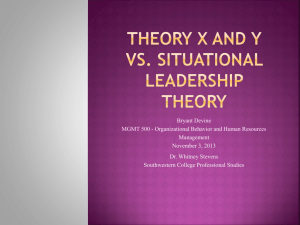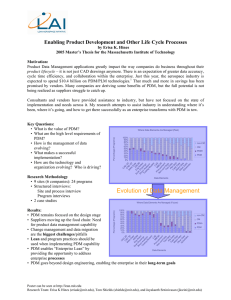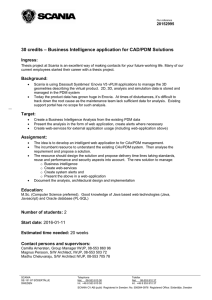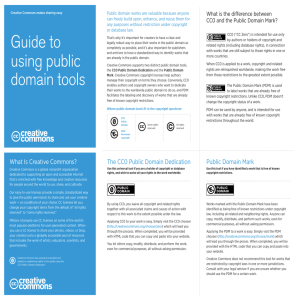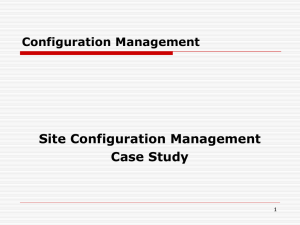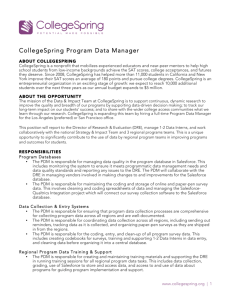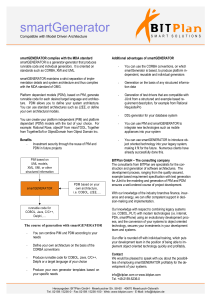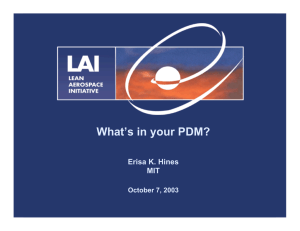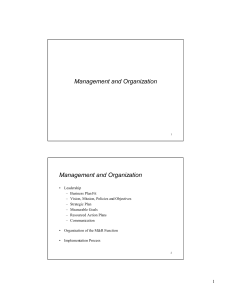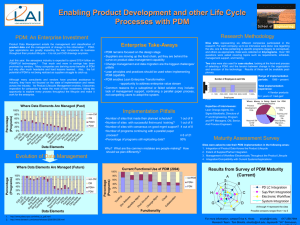Decision Making Processes
advertisement
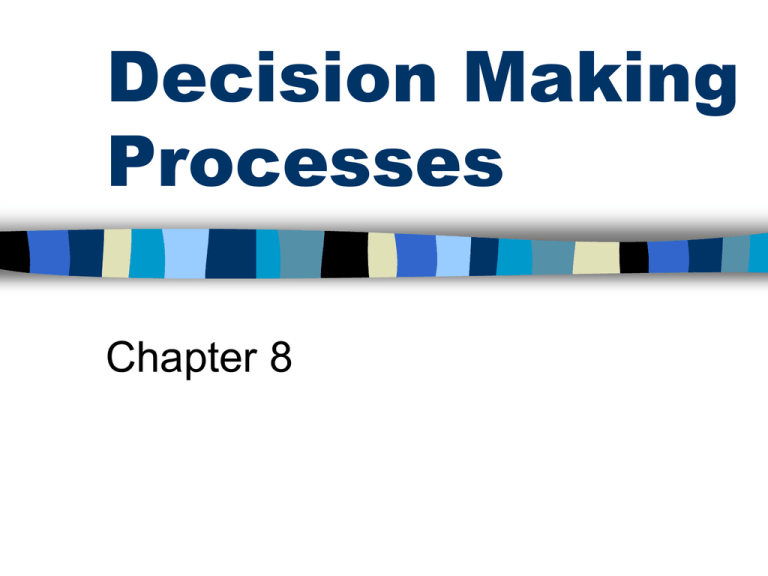
Decision Making Processes Chapter 8 Overview One of the most critical activities in an org. is the making of decisions How do you make a decision? Consider a recent decision, and how did you make that decision? Explore the role of comm. In organizational decision making – General models of decision-making process – Discuss small group context Models of decision making process Classical approach – – – – – Limited participation (consider contributions) Define and identify the problem Search for relevant information Est. decision options Evaluate based on criteria for decision effectiveness – Make optimal choice Normative model (Nutt) Formulation- compute needs and desires of org. and individuals Concept development Detailing Evaluation Implementation Alternatives to rational models Satisfying process vs. optimizing model – Bounded Rationality Limited cognitively Limited by practical aspects Got an example of each???? Intuitive process Garbage can model – Process of elimination – “we don’t need it now, so we will put it away for later” Case in Point (p. 141) “Personal Finance Decisions” Realize that….. Very few organizational decision makers use all the stages of the normative process Most decision makers don’t want to re-invent the wheel Decision makers often don’t consider rationale for decision (why or how) DM often make decision and implement before identifying other possibilities Concept development is most overlooked step Performance equation P = idea multiplied by implementation Small group decision making Descriptive models of small group decision making –Fisher’s group phase model »Orientation »Conflict »Emergence »Reinforcement Small group decision making (cont.) Multiple sequence model-multiple decision paths-similar to “equifinality” from systems theory (p. 144) Typology of small group decision paths – Unitary sequence path – Complex cyclic path – Solution oriented Effective small group decision making Groupthink: “the mode of thinking that people engage in when they are deeply involved in a cohesive in-group, when the members’ striving for unanimity overrides their motivation to realistically appraise alternative courses of action” Symptoms of groupthink (p. 145) So, what do you do as a group member or leader to deal with group think? Effective small group decision making How can a group improve its chances of making effective decisions? – Vigilant interaction – Introduce the right kind of conflict • Cognitive conflict • Affective conflict – Critical debate b/w co-groups • Dialectical inquiry • Devil’s advocacy Media example-Clips at 12 Angry Men & 12 Angry Men Functional Theory Effective decision making depends on groups attending to critical functions through group communication. Understanding the problem Identifying alternatives Determining criteria for alternatives Brainstorming-Good or bad? Role of technology (GDSS)-helpful? (p. 147) Symbolic Convergence Theory – role of communication in creating group identity – Relational aspects of groups – Consider “backstage” communication Participation in decision making (PDM) Affects of participation in decision making – Participation in org. decisions would make employees less resistant to change – Participation is linked to job satisfaction and performance – Increase cognitive ability-better utilization of information Models of PDM The Affective Model or Feel Good Model (p. 148) The Cognitive Model or Contribution Model (p. 149) Affective Model of PDM PDM SHON WS MO PROD Cognitive Model of PDM UIF PDM PROD DIF Satisfaction Participative applications in org.’s Ranges-informal to formal Classification of program participation (p. 151) Workplace democracy (p. 152) – Encourage contribution – Based on humanistic ideals – Multiple stakeholders collaboration – Not synonymous with “one person, one voice” Paradoxes of Participative Democracy Paradox=something absurd or contradictory: a statement, proposition, or situation that seems to be absurd or contradictory, but in fact is or may be true (http://encarta.msn) Structure-design of org. democracy Agency-individual’s sense of resp. Identity-issues of inclusion in decision making Power-issues of how control re exercised
